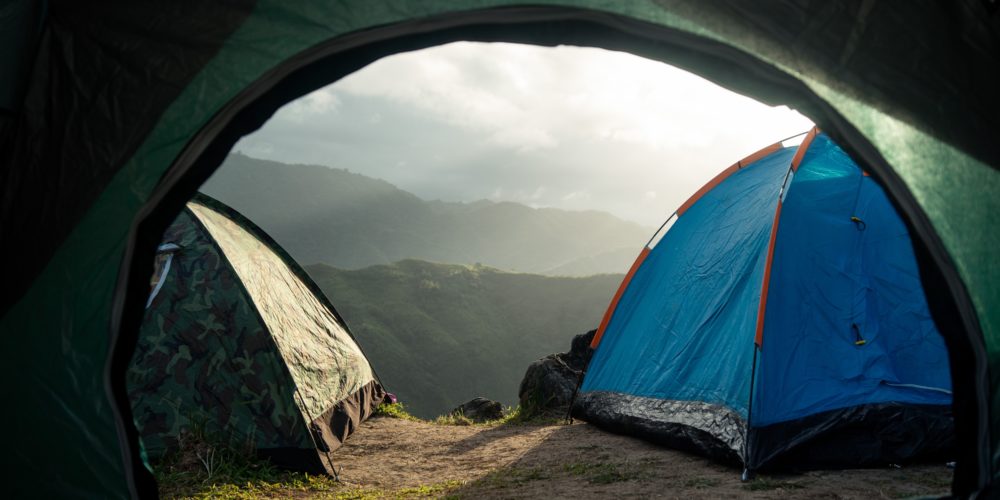By AU Guide John Benincasa
When a collection of waterproof material, fine mesh, and lightweight poles come together properly, the result can be amazing.
We ask a lot from our tents – from keeping us dry to protecting us from life-threatening conditions. Picking the right one is imperative.
TYPES
For this discussion, we will focus on three-season tents as they all share basic similarities and will suffice for most peoples’ camping/backpacking needs.
As for size, we will focus on the backpacking tent which will generally be a one-, two-, or three-person tent.
CHARACTERISTICS
Single-walled tents are usually a single-chamber design with poles erected on the inside. The ventilation comes mainly from the door(s) as the amount of mesh is limited. Used more for cold weather and mountaineering.
Double-walled tents are much more common on trails outside of winter. They consist of an enclosed sleeping chamber made up of a large amount of mesh and a separate waterproof covering layer called a rain fly. The rain fly is pitched above and around the main body. The framework of poles is erected, and the tent is then attached to them. Usually a very easy set up.
Double-walled tents are preferable for their ease and the increased ventilation they provide. The large amount of mesh helps prevent condensation inside the tent, and the resulting drips and dampness.
Double-walled tents are flexible in that their elements can often be used separately if desired. No rain in the forecast? Don’t bother with the rain fly and enjoy the view of the stars through the top.
FREESTANDING OR NOT?
A freestanding tent is the easiest to manage and most common. It will stand on its own when erected, without the need for guy lines and tie-downs, and can be picked up and moved if necessary.
SINGLE, TWO-PERSON, OR THREE?
Do you camp solo? Are you ok with sharing a small tent? Obviously, the single will be the smallest and lightest of the bunch. Generally narrow, but sufficient for one person. A shared two-person will be a tighter fit, but the load can be divided by the occupants. A three-person tent can be further divided among a trio, but three to a tent means someone’s in the middle. A backpacker looking for the most flexible option might consider a two-person tent. It can be shared if needed, but the newer tents have become so lightweight that it can easily be packed and carried for use as a single. I’ve gotten used to spreading out alone in my double, and it feels palatial.
ONE DOOR OR TWO?
The short answer is two. If sharing one door you’ll either be climbing over someone, or they’ll be climbing over you for the 3 am bathroom run. Also, two doors means two vestibules (the area outside the tent but still covered by the fly) where you can keep gear dry without having to sleep with it. If opting for a single door, consider its positioning. A side door makes for an easier in-and-out as opposed to a door at your feet – it will have you twisting a bit to exit. Didn’t seem obvious until my hiking partner got a single with a door at his feet. He complains every time.
COST
Prices vary greatly with tents – from less than $100 to thousands of dollars. One can easily find a two-person tent for less than $100 in the outdoor section of a chain store and ask themselves why they should spend three or four or even five times that for what seems like a comparable tent. A bargain tent will function just fine for the occasional overnight in mild and dry weather, living most of its life tucked away in a closet. Handling adverse weather conditions and durability separate higher-end tents from their similar, but cheaper, cousins. Better design, construction, and materials make for a tent that can easily handle driving downpours, won’t buckle from wind or snow, and, with proper care, can last years and years. A tent will likely be the most expensive piece of gear a backpacker will purchase but should be considered a long-term investment that will pay dividends for a long time to come.

